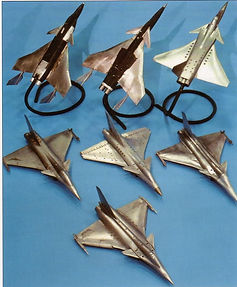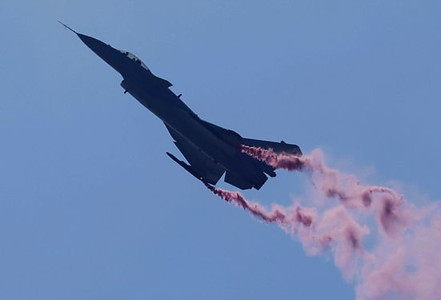
J-20`s aerodynamics

While the picture is not perfect in scale it is more or less accurate to show that J-20 has a longer length and longer fuselage than F-22
The J-20 uses several sources of lift, the first one is the forebody chines that will generate vortex induced lift, later the canard and the upper intake strake system, followed by the Leading edge wing extension and the main wing, and last is the V tail.
The J-20 creates vortex induced lift with the forebody chines, strake, wing leading edge extension and canard.
The role of the J-20 can be considered very likely as a very long range fighter interceptor and with a very important strike capacity, the main reasons is the length of the fuselage that can not be justified unless we see it will have the extra volume to carry more fuel than what the F-22 can carry; and the need to operate over large expenses of land and sea, the delta wing canard configuration can be explained as part to have low drag at supersonic speeds and relatively the best maneuverability without an engine with thrust vectoring. The DSI intake design will limit it to speeds below Mach 2, however the lack of a proper engine, does limit the
J-20`s thrust to weight ratio its current engines lack the ability to use thrust vectoring as an auxiliary pitch and yaw control device either for turn rates or roll rates.
This will impact in its acceleration and rate of climb and its ability to reach supersonic speeds without afterburner and even will impact its stealth capability because thrust vectoring can be used as an non aerodynamic trimming control device during cruise flight.
The lack of thrust vectoring also limits its post stall capability, in fact at this moment has not shown such capability if we compare it to the F-22 or Su-57.

Here we see an aerodynamic study about forebody chine vortex generation, J-20,and all modern 5th generation fighters use nose chines, however Su-27 and F-16 have wing leading edge extensions (LEX) which almost have the the same function, because they are very sharp and long, having their start at almost the radome level. The advantage of Chines is they are used for stealth needs and at the same time, they allow vortex induced lift generation.
Another advantage of a Chine-shaped forebody is its positive effects on directional stability at high-alpha as has been affirmed by R. Ravi and William H. Mason; thus the J-20 achieves improved directional stability and vortex induced lift at high-alpha.
These models are of a study of Rafale` s early conceptual configurations of aerodynamic models, this is not of the J-20`s but gives an Idea of several configuration studied by Dassault that have a similar aerodynamic configuration to the modern J-20

Here we see the J-20 and its vortex system, the canards generated vortices meet the vertical canted dorsal fins allowing symmetric vortex burst thus keeping yaw stability A pair of large vortices generated by the highly swept wing root LEXs and canards contribute to enhanced vortex lift by developing high suction areas over the wings. The J-20 aircraft is designed to utilise unique characteristics of these vortex structures which are prime contributors to the aerodynamics of an aircraft during high angle of attack flight. The twin vertical tails of the J-20 aircraft are placed in closer proximity to the LEX and canards vortex flow field to take full advantage of the concentrated energy contained in the LEX and canards vortices to provide the directional stability and control necessary for high angle of attack manoeuvrability.
Highly swept wing planforms like those of J-20 aircraft exhibit flow in which a highly stable vortex forms along the leading edge resulting in the production of large increases in lift known as vortex lift. Vortex lift is the result of a low pressure region created by the vortical flow near the wing surface which, in essence, creates suction over the wing surface.
The J-20 has a wing designed for vortex lift, its wing allows for controlled flow separation at the leading edge. The concept of vortex lift deviates dramatically from conventional attached flow theory. Instead of postponing the inevitable separation for somewhat limited gains, vortex lift uses the properties of separated vortical flow to enhance lift.
To understand the dynamics of the J-20 canard upon the wing let us see this:
The results indicated that although downwash from the canard reduced the wing lift at angles of attack up to approximately 16°, the total lift was substantially greater with the canard on than with the canard off. At angles of attack above 16°, the canard delayed the wing stall. Changing canard deflection had essentially no effect on the total lift, since the additional lift generated by the canard deflection was lost on the wing due to an increased downwash at the wing from the canard. There was a favorable wing-on-canard lift interference if the canard was located longitudinally near the wing leading edge and in the wing chord plane or above the wing plane. A favorable body-on-canard interference effect was found that delayed canard stall.
CANARD-WING LIFT INTERFERENCE RELATED TO MANEUVERING AIRCRAFT AT SUBSONIC SPEEDS By Blair B. Gloss and Linwood W. McKinney Langley Research Center
The Russians avoided that lift lost by skipping the canards and using LEVCONS on Su-57.
However the J-20 has not a close coupled canard as Lavi or Rafale, its canard its further forward and it is a long coupled canard gaining less lift than a close coupled canard at high AoA, but relatively reduced the canard negative downwash effect on the wing by adding a Leading root extension to its main wing.
Basically by adding a LEX, sweeping a negative angle to the trailing edge of the wing and cropping it at the tips, the wing has a center of pressure further forward.


This desirable effect on a frontally placed canard is caused by the interference between the vortex systems of the canard and those of the wing. Drawn on the basis of experiments with smoke, illustrates how the vortices of the canard when in the upper position are forced by the vortices of the wing to pass across the upper surface at a lesser distance than when the main wing is removed. Due to this the low pressure below the vortices, which produces lift, is enhanced. However, it is even more Important that the collapse of the forward-progressing canard vortices is delayed by the accelerating flow and by the accompanying favorable pressure gradient, present on the upper surface of the wing. When the canard is in the lower position, the vortices pass below the wing, where they encounter a retardant flow with an unfavorable pressure gradient which accelerates the forward progression of the vortex breakdown.
https://ntrs.nasa.gov/archive/nasa/casi.ntrs.nasa.gov/19860019453.pdf
Daniel Ikaza, ITP project manager - nozzles, says Dasa's study shows that a Eurofighter flying at 30,000ft (9,150m) and a speed of M1.8 requires a 4° upward flaperon deflection to maintain level flight. A 5° upward nozzle deflection instead would enable the aircraft to fly "clean" and reduce the required engine thrust by 3%.
Under the same conditions, but in a sustained turn, where the pitch element of the control surface deflection was 6° up, this could be reduced to 2° combined with a 4° nozzle-up component. In this configuration lift coefficient would be increased by 14%, translating into a 9% improvement in turn rate. Take-off distance could be cut by at least 25%.
https://www.flightglobal.com/ej200-thrust-vectoring-backed/32225.article
The new J-20B with tVC nozzles can expect an increase in sustained turn rate similar to Eurofighter
